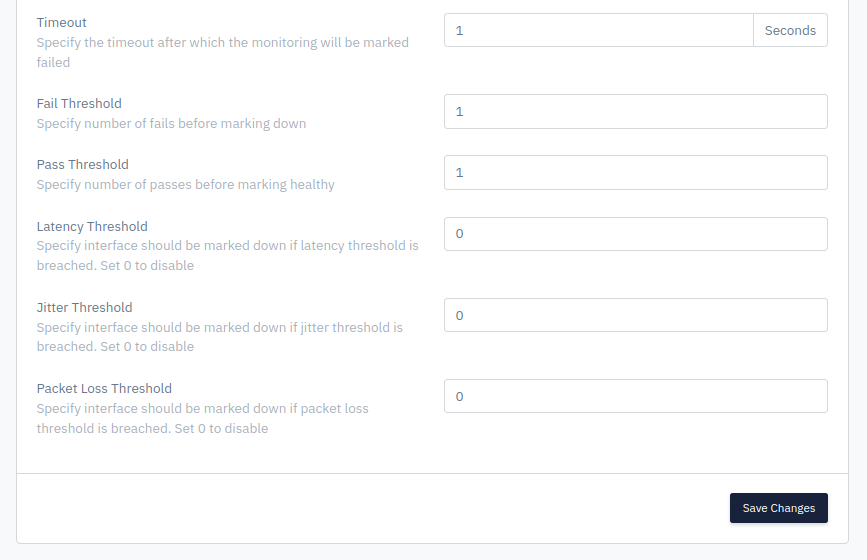Monitor
Link monitoring in Haltdos LLB
Haltdos allows users to configure custom monitoring that can monitor the interface groups. These monitors check the health of the link to assist in efficient load balancing across multiple WAN links.
If any of the links are monitored and marked as down, the traffic will not redirect to the same link unless the link comes up and complete the pass threshold.

How to Use:
-
Go to Stack >LLB > Monitors.
-
Click Add Monitor button.
-
Configure your settings.
-
Click Save.

Description:
Enabled
This option allows to enable or disable monitor rule. by default, It is set to disable.
Accepted values: Enabled / Disabled
Default: Disabled
Monitor Name
This option allows the user to set a name for his monitoring rule.
Accepted values: String
Default: Blank
Update Static Route
It specifies if the static route should be updated upon failure.
Accepted values: Enabled / Disabled
Default: Disabled
Use IPv6
It specifies if the monitor should use the IPv6 stack.
Accepted values: Enabled / Disabled
Default: Disabled
Monitor Type
It specifies the health check type for monitoring. Users need to select the appropriate type of protocol to monitor the interfaces. By default, TCP is selected. Monitor can be configured for the mentioned protocols using the drop-down;
Accepted values: TCP / ICMP / DNS / HTTP / HTTPS / SCRIPTS
Default: TCP
To enable monitor based on UDP, ARP or any other protocol, CUSTOM SCRIPT can be used.
Query Server
This option can only be seen when ICMP/TCP other protocol is selected in the Monitor Type. It allows the user to set the query server IP Address to which the monitor request will send.
Accepted values: IP
Default: Blank
Port
It specifies the port number to connect the server when TCP protocol is selected in Monitor Type.
Accepted values: Integer
Default: 80
Check Interval
This option allows the user to set a health check interval for monitoring the services in seconds. After the mentioned time period, defined monitor settings will be checked.
Accepted values: Integer
Default: 10
Timeout
It specifies the timeout after which the monitoring will be marked failed. Users can specify the timeout in seconds.
Accepted values: Integer
Default: 1
Fail Threshold
This option allows the user to set the integer values for the fail threshold limit. When an already set monitor threshold reaches the specified threshold, it will be marked down. Users can set the threshold on network activities like latency, packet drop, and jitter.
Accepted values: Integer
Default: 1
Pass Threshold
This option allows the user to set the integer values for the pass threshold limit. When the set monitor threshold reaches the specified threshold, it will be marked up.
Accepted values: Integer
Default: 1
Latency Threshold
Latency is the time it takes for data to pass from one point on a network to another. This option specifies that Interface should be marked down if the latency threshold is breached. By default, the latency threshold is set to 0 which is its disable state.
Accepted values: Integer
Default: 0
Jitter Threshold
Jitter is when there is a time delay in sending data packets over your network connection. This option specifies that the interface should be marked down if the jitter threshold is breached. By default, it is set to 0 which is the disabled state.
Accepted values: Integer
Default: 0
Packet Loss Threshold
Packet loss occurs when one or more packets of data traveling across a computer network fail to reach their destination. Packet loss is either caused by errors in data transmission, typically across wireless networks, or network congestion. It specifies interface should be marked down if the packet loss threshold is breached. Set 0 to disable.
Accepted values: Integer
Default: 0